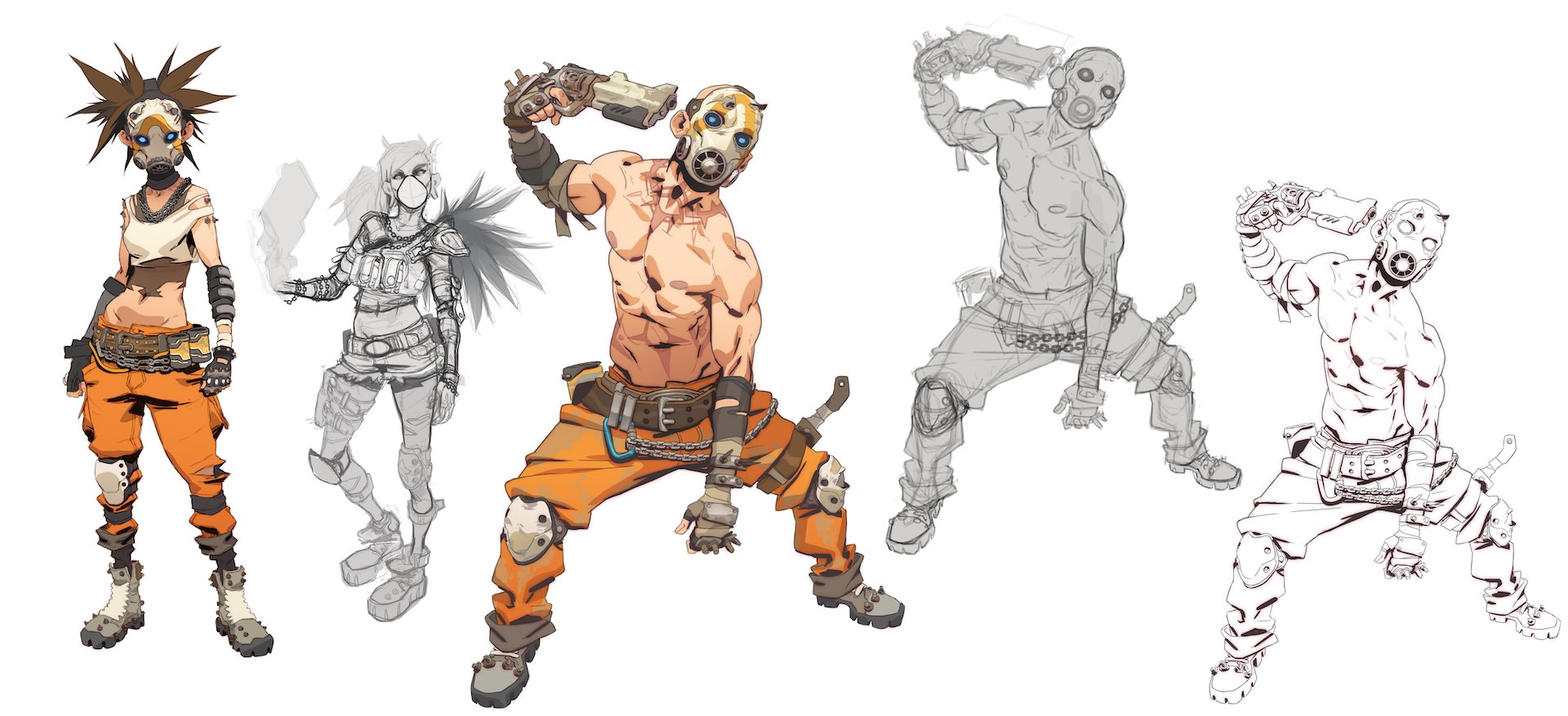Few games can boast an art style that’s so colorful and instantly recognizable as Borderlands games have. The Gearbox titles that first launched in 2009 re-defined what first person action-adventure games could look like: bright and highly colorful with a cartoon-ish look and feel.
Instant recognition in the games market is quite the accomplishment. It also almost never happened. As mentioned in a Game Developers Conference talk called Behind Borderlands’ 11th-hour Style Change, Borderlands was destined to be yet another ‘brown shooter’. Only in the very last stages of production did Gearbox decide on the drastic artistic overhaul that gave us the art style we know and love.
Near-future realism
Before Borderlands’ bucked the trend of ‘realistic’ (and often drab) shooters, its art style was summarised in a presentation sheet. It showed eight individual concept images: realistic-looking, ‘near-future’-type soldiers, vehicles and weapons; a couple of desolate-looking, drab environments; and one lonely, critter-y animal. The presentation bore the words ‘realistic - retro - mechanical - serious - gritty - fantastic’, as keystones for Gearbox’ art department. This art direction was backed by a backstory of a desolate planet with hidden vaults, and gameplay that combined first person shooter action with RPG elements.
Instant recognition in the games market is quite the accomplishment. It also almost never happened. As mentioned in a Game Developers Conference talk called Behind Borderlands’ 11th-hour Style Change, Borderlands was destined to be yet another ‘brown shooter’. Only in the very last stages of production did Gearbox decide on the drastic artistic overhaul that gave us the art style we know and love.
Near-future realism
Before Borderlands’ bucked the trend of ‘realistic’ (and often drab) shooters, its art style was summarised in a presentation sheet. It showed eight individual concept images: realistic-looking, ‘near-future’-type soldiers, vehicles and weapons; a couple of desolate-looking, drab environments; and one lonely, critter-y animal. The presentation bore the words ‘realistic - retro - mechanical - serious - gritty - fantastic’, as keystones for Gearbox’ art department. This art direction was backed by a backstory of a desolate planet with hidden vaults, and gameplay that combined first person shooter action with RPG elements.



.jpg)